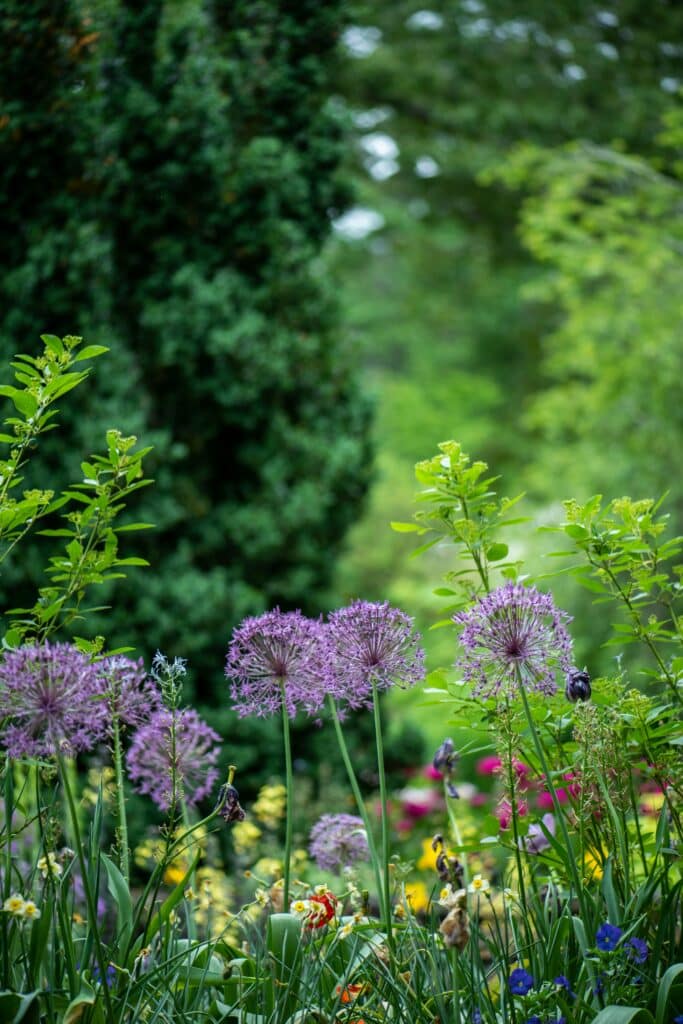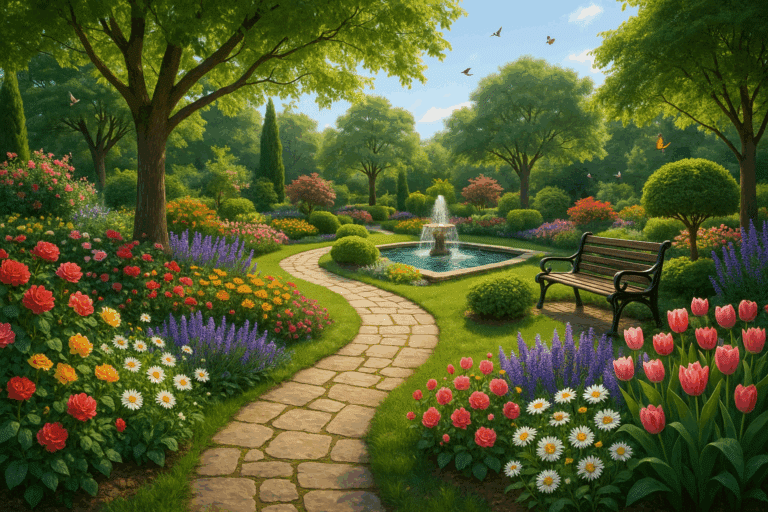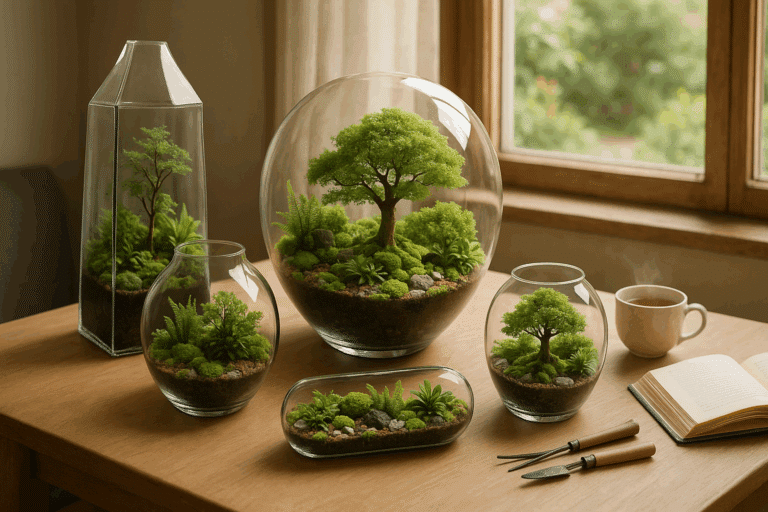Yearning to add some lush green vibes to your living space? This comprehensive guide is perfect for those eager to transform a humble bookshelf into a stunning indoor garden. Unleash your creativity and grow your green thumb by crafting a striking garden display that breathes life into any room. This is not about merely owning houseplants; it’s about creating a unique haven of tranquility that resonates with your personality.

Plants have an inherent beauty that transforms spaces, and arranging them on a bookshelf creates an aesthetic appeal like no other. We will walk you through selecting the right plants, design tips, and maintenance tricks for your new indoor garden. From cascading trailing plants to bright flowers and quirky succulents, there’s a whole world of flora waiting to grace your bookshelves.
In addition, we will delve into the beneficial aspects of indoor gardening – improving air quality, boosting mood, and fostering a sense of accomplishment. With our guide, your bookshelf will not only be a home to your favorite reads but also a thriving green display that serves as an engaging centerpiece for your indoor decor. So, gear up and get ready to revolutionize your space with this exciting project! 🌱🌿📚
Planning Your Bookshelf Garden: A Complete Guide to Cultivating Vertical Greenery
In the world of urban gardening, transforming an ordinary bookshelf into a lush, living display is both a practical and inspiring project. With space at a premium in many homes and apartments, the idea of creating a bookshelf garden combines ingenuity, aesthetics, sustainability, and even a touch of technology.
This guide will walk you through every step of planning, setting up, and maintaining a beautiful bookshelf garden—whether you’re a beginner with a brown thumb or a seasoned plant parent looking for new creative outlets.
From Seasons to Style: Mastering the Art of Bookshelf Gardens with Creativity and Smart Care
Before diving into logistics, it’s worth understanding the many benefits of a bookshelf garden:
🌿 Aesthetic Appeal
Indoor plants introduce color, texture, and vitality to any room. A well-arranged bookshelf garden can become the centerpiece of your decor, bringing harmony and elegance to your space.
🌿 Mental Health Boost
Numerous studies have shown that being surrounded by greenery can reduce stress, improve mood, and enhance productivity. A bookshelf garden offers a calming presence, ideal for home offices, bedrooms, and reading nooks.
🌿 Better Indoor Air Quality
Many houseplants act as natural air purifiers, removing toxins such as benzene and formaldehyde. Including plants like spider plants or peace lilies can improve air circulation and humidity, especially in enclosed rooms.
🌿 Space Efficiency
If you’re short on floor space, vertical gardening is the answer. A bookshelf lets you grow a diverse array of plants in a compact footprint.
Choosing the Right Bookshelf
Before adding any plants, consider the structural characteristics of your bookshelf:
Material: Solid wood, plastic, or metal bookshelves are best. Avoid particleboard or MDF, which absorb moisture and warp over time.
Weight Capacity: Ensure each shelf can handle the weight of pots, water, and soil.
Shelf Depth: Deeper shelves (10–14 inches) allow for larger pots and better plant diversity.
Back Panel: A removable or open back improves air circulation and lighting options.
If you’re using a secondhand shelf, inspect it thoroughly and reinforce weak joints or shelves if necessary.
Location of the Bookshelf
Light exposure is crucial for plant growth. Consider these placement tips:
South-facing windows receive the most sunlight—great for sun-loving herbs or succulents.
East- or west-facing windows offer moderate light—ideal for ferns, pothos, or philodendrons.
No natural light? Install grow lights (LED or fluorescent) that mimic the sun’s spectrum and can be programmed for on/off cycles.
If possible, place your bookshelf where light hits from the side or above, avoiding leaf burn from intense direct rays.
Waterproofing and Drainage
Bookshelves aren’t typically built for water exposure. To avoid damage:
Line shelves with plastic trays, vinyl sheets, or silicone mats.
Apply waterproof sealant or polyurethane coating to wood surfaces.
Use pots with drainage holes, and place saucers or coasters underneath to catch runoff.
Alternatively, consider self-watering pots to reduce the risk of overwatering.
Choosing the Right Plants
Your plant selection should reflect:
Available light
Shelf height and depth
Humidity levels
Your ability to maintain them
Here are some ideal plant types for a bookshelf setup:
Top Shelves (Brightest Light)
Succulents (e.g., echeveria, haworthia, jade plant)
Cacti
Herbs (e.g., basil, thyme, rosemary—near the kitchen)
String of Pearls or Burro’s Tail (beautiful hanging effect)
Middle Shelves (Moderate Light)
Pothos
Spider plant
Peperomia
Fittonia (nerve plant)
Calathea (patterned leaves, adds visual interest)
Lower Shelves (Shaded Areas)
Ferns (maidenhair, Boston fern)
Snake plant (Sansevieria)
ZZ plant
Philodendron
Moss or terrarium containers
Mix plants with different heights, leaf shapes, and colors for dynamic contrast.
Potting and Containers
Lightweight containers reduce stress on shelves.
Repurposed containers like mugs, teacups, or tin cans can be turned into charming pots (just ensure proper drainage).
Choose uniform colors for a clean, minimalist look, or go eclectic with mismatched styles.
Add pebbles or activated charcoal to the base of containers for additional moisture control and odor prevention.
Setting Up Your Bookshelf Garden
Once you’ve gathered your materials, follow this sequence:
1. Protect the Shelves
Line each shelf with a waterproof layer. Place trays to catch excess moisture.
2. Arrange Plants by Light Need
Put sun-loving plants at the top and shade-tolerant ones lower down. Rotate plants occasionally for even light exposure.
3. Vary Height and Texture
Use plant stands, stacked books, or risers to vary pot height and create dimension. Combine cascading plants with upright ones for a tiered look.
4. Add Decorative Elements
Integrate elements like candles, stones, books, or art to give your garden personality.
Caring for Your Bookshelf Garden
Even low-maintenance plants need attention. Follow these tips:
💧 Watering
Check soil moisture with your finger or a moisture meter.
Most indoor plants prefer drying out slightly between waterings.
Mist humidity-loving plants (ferns, calathea) regularly.
🌱 Feeding
Use a water-soluble fertilizer monthly during spring and summer.
Reduce or eliminate feeding during fall and winter.
🍂 Grooming
Prune dead leaves and spent blooms.
Wipe leaves to remove dust, which can block sunlight.
Rotate plants every 2–4 weeks for even growth.
🐛 Pest Control
Watch for gnats, mealybugs, or aphids. Use:
Neem oil spray
Insecticidal soap
Yellow sticky traps for fungus gnats
Seasonal Care Tips for Your Bookshelf Garden
Just like outdoor gardens, bookshelf gardens respond to the rhythms of nature. Even though they’re indoors, the changes in temperature, humidity, and daylight throughout the year will influence how your plants grow. Understanding these seasonal shifts and how to adjust your care routine accordingly can help your bookshelf garden thrive year-round.

🌸 Spring & Summer: Growth and Renewal
Spring and summer mark the active growing season for most houseplants. Increased sunlight and warmer temperatures signal plants to wake up and stretch toward the light.
Key care tasks during this period include:
- Repotting rootbound plants: If roots are circling the bottom or pushing through drainage holes, it’s time to upgrade the pot. Spring is the best season to repot, as plants recover quickly from the stress.
- Boosting watering frequency: As plants become more active, they require more moisture. Check the soil more often, especially on warmer days.
- Feeding with fertilizer: Use a balanced, water-soluble fertilizer every 2–4 weeks to support new foliage and root development. Organic options like compost tea or worm castings are great for eco-conscious gardeners.
- Turning your plants: Rotate each pot 90° every two weeks to encourage even growth and prevent leaning toward the light source.
- Pruning for shape: Trim dead or leggy stems to encourage bushier, healthier plants.
🍁 Fall: Preparation and Transition
As the days grow shorter and temperatures cool, your bookshelf garden will begin to slow down.
Here’s how to transition into fall:
- Scale back watering: With less sunlight and slower growth, plants need less water. Let the topsoil dry more thoroughly before each watering.
- Cut back on feeding: Suspend or reduce fertilization. Feeding during dormancy can stress the plant and cause weak, spindly growth.
- Clean up leaves: Plants may begin to shed older leaves. Remove them promptly to prevent rot and mold.
- Move sensitive plants away from drafts: Fall often brings cooler breezes indoors. Keep plants away from open windows, especially at night.
- Monitor lighting: Consider adding grow lights to compensate for decreasing daylight hours.
❄️ Winter: Rest and Protection
In winter, most houseplants go dormant or grow very slowly. The key during this season is minimal interference.
Winter care tips include:
- Avoid overwatering: This is the number one killer of houseplants in winter. Water sparingly, only when soil is fully dry.
- Keep humidity up: Indoor heating systems dry out the air. Mist your humidity-loving plants or use a small humidifier nearby.
- Protect from cold: Never let leaves touch cold glass or windows. Move pots back if needed.
- Watch for pests: Spider mites, mealybugs, and aphids can thrive in warm, dry homes. Check under leaves and near soil.
- Wipe down leaves: Dust accumulation can block light and encourage pests. Use a damp cloth to gently clean leaves.
🌱 Year-Round Tip
Keep a plant journal to track watering dates, fertilizing schedules, growth observations, and issues. Over time, this record will help you understand your plants’ unique needs and seasonal behavior.
🎨 Design Styles for Bookshelf Gardens
Bookshelf gardens are as much about visual storytelling as they are about plant care. Your shelves are blank canvases, and your plants, containers, and accessories become the brushstrokes of your style. Whether you’re leaning toward minimalism or maximalist jungle vibes, there’s a design approach to suit every taste.
🌺 Boho Jungle
If you love wild, organic shapes and textures, this lush and layered style is for you.
Key elements:
- Macramé hangers dangling from shelf edges
- Cascading vines like pothos, philodendron, or string of hearts
- Patterned ceramic pots, rattan baskets, or woven planters
- Layered rugs and earth-toned decor around the base
This style embraces controlled chaos—dense greenery, natural materials, and vibrant energy. Add a few driftwood pieces or feathers to enhance the earthy vibe.
Creative Additions and Repurposing Ideas
Get crafty and personalize your garden:
Reuse old books as risers or hollow them to hide planters.
Mount LED strip lights under shelves for ambient glow.
Use chalkboard labels for plant names or care notes.
Add a mini water feature on the bottom shelf for sound and humidity.
Tech Innovations to Enhance Your Garden
Smart devices make plant care nearly foolproof:
🌱 Smart Pots & Planters
Monitor soil moisture, pH, temperature, and more. Some even connect to mobile apps for updates and reminders.
💧 Automated Watering Systems
From gravity-fed water globes to app-controlled drip systems, automation is perfect for frequent travelers.
💡 LED Grow Lights
Clip-on or strip lights simulate daylight. Some models even mimic sunrise/sunset cycles for natural growth rhythms.
Common Challenges and Solutions
| Problem | Cause | Solution |
|---|---|---|
| Yellowing leaves | Overwatering, poor light | Check drainage, move to brighter location |
| Moldy soil | High humidity, poor airflow | Reduce misting, increase airflow |
| Fungus gnats | Damp soil | Let soil dry, use sticky traps |
| Leggy plants | Inadequate light | Install grow lights, rotate plants |
Your Vertical Oasis Awaits
Transforming a simple bookshelf into a thriving vertical garden is more than a decorative endeavor—it’s a lifestyle statement. It reflects your connection to nature, your sense of creativity, and your commitment to wellness and sustainability.
With thoughtful plant selection, smart use of space, and a touch of modern technology, your bookshelf can become a green sanctuary, a conversation piece, and a source of daily joy. Whether you’re a beginner with a single pothos or an enthusiast building a plant library, this garden will evolve with you.
So take that empty shelf and fill it with life. Breathe easier, smile more, and welcome the calming, grounding energy of plants into your home—one shelf at a time. 🌿📚💚
Conclusion
In conclusion, transforming a bookshelf into a garden display is a fantastic way to introduce greenery into your home or office. It’s a project that requires some planning and regular maintenance, but the end result is worth the effort. Plus, with the help of technology, it’s now easier than ever to keep your bookshelf garden thriving. Happy gardening!



